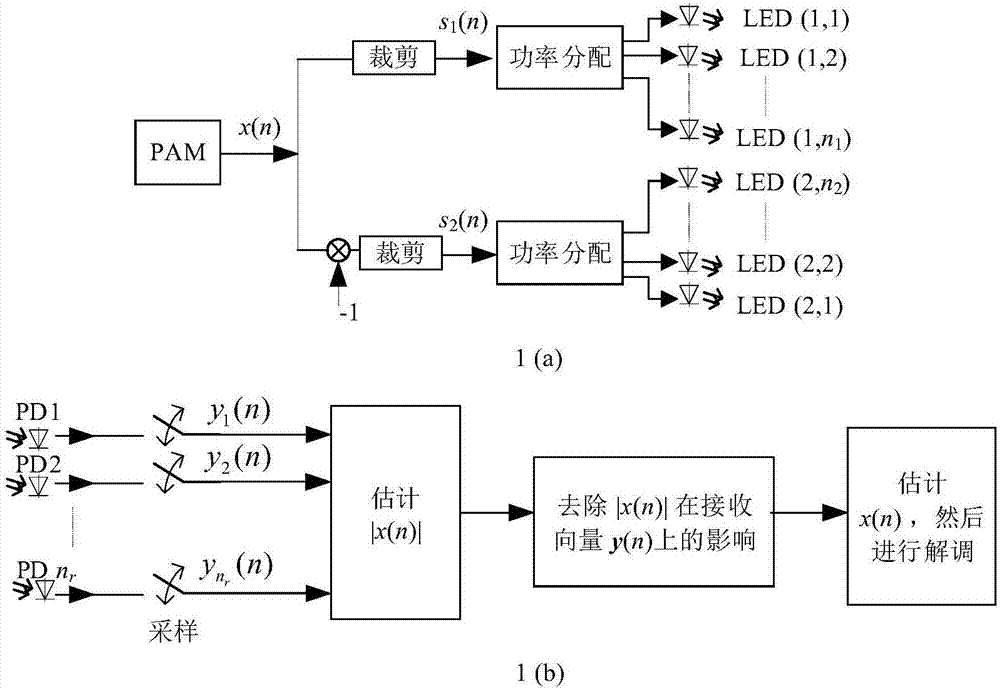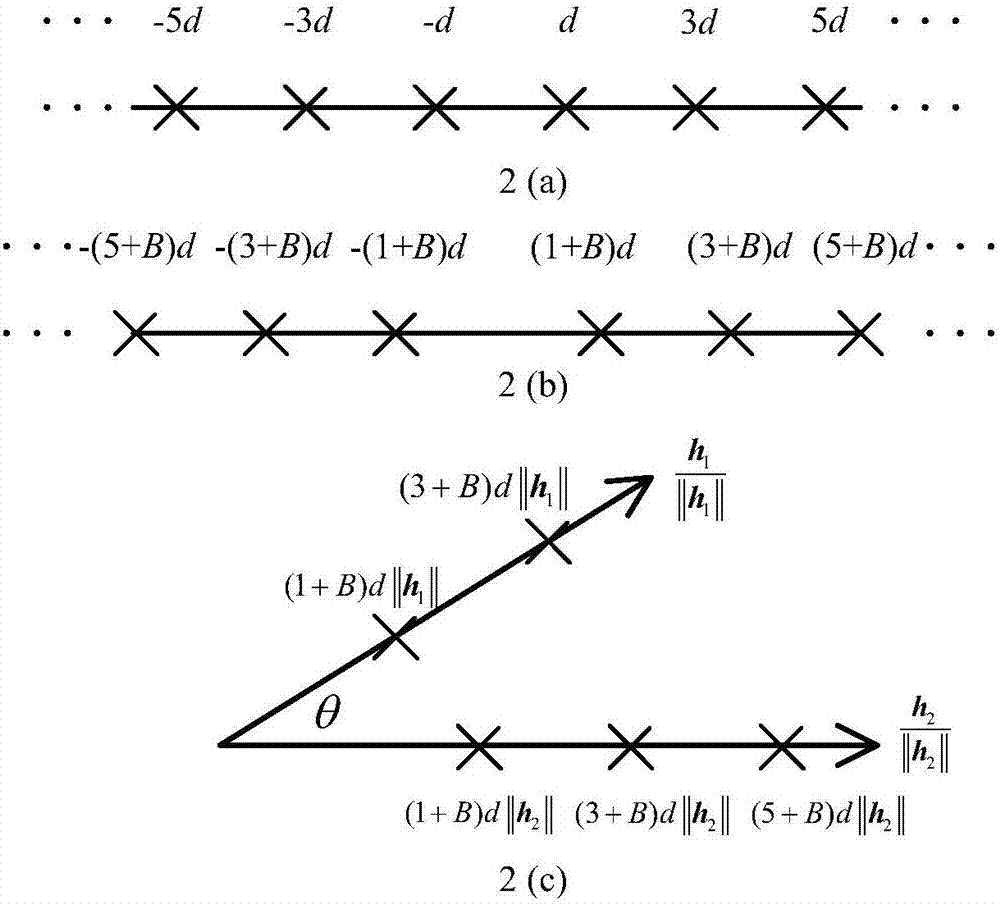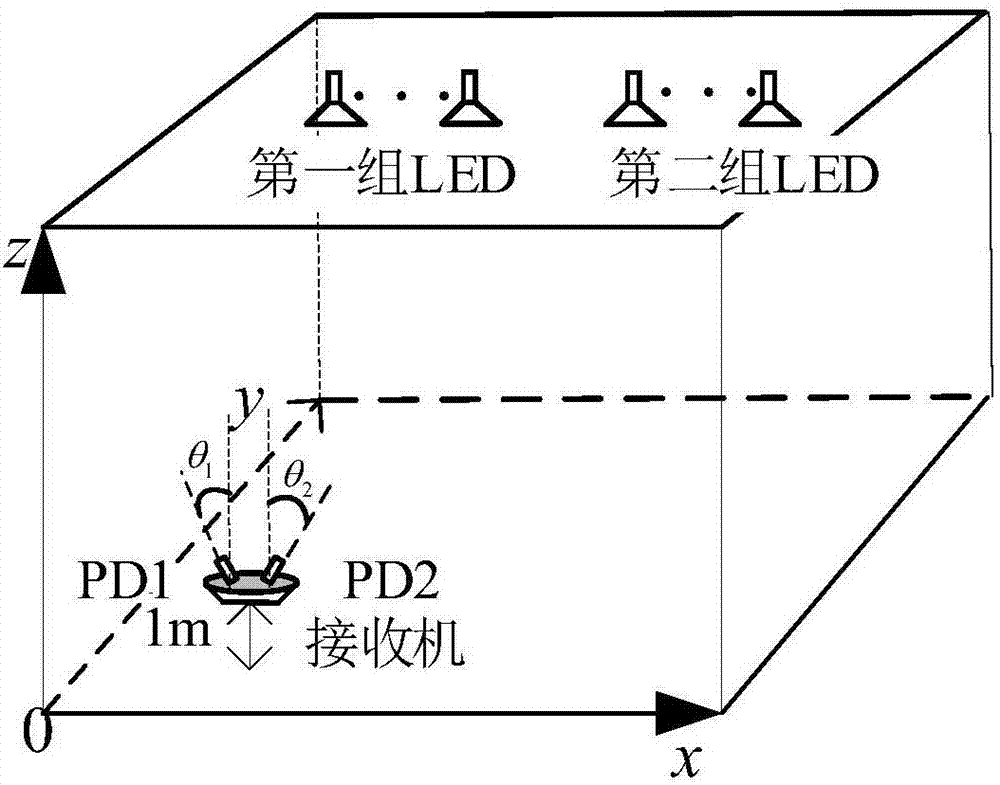Multi-input multi-output visible light communication system based on coefficient separation
A visible light communication, multi-output technology, applied in digital transmission systems, transmission systems, baseband systems, etc., can solve the problem of high complexity of the optimal receiver
- Summary
- Abstract
- Description
- Claims
- Application Information
AI Technical Summary
Problems solved by technology
Method used
Image
Examples
Embodiment 1
[0131] Assuming that the transmitter has 2 LEDs, the first group and the second group each have 1 LED, and the coordinates of the two LEDs are (1.5,3,6) and (4.5,3,6) respectively. The coordinates of the two PDs at the receiving end are (2.5,3,1) and (2.6,3,1), respectively, θ 1 = θ 2 = π / 4.
[0132] Such as Figure 4 As shown, the bit error rate performance of different modes includes the positive and negative coefficient separation mode of the present invention based on bipolar 16-PAM, wherein parameter B=2; the 2×2 MIMO mode based on DC bias 4-PAM, wherein two Independent DC bias 4-PAM data is sent, and the receiver adopts the minimum mean square error algorithm; based on DC bias 16-PAM diversity method, in which two LEDs send the same DC bias-based 16-PAM signal; based on Unipolar 8-PAM spatial light modulation method, in which 1 bit of information is modulated to the index of the LED, and the receiver uses maximum likelihood detection.
[0133] from Figure 4 It can ...
Embodiment 2
[0135] Assuming that the transmitter has 4 LEDs, the first group and the second group have 2 LEDs respectively, and the coordinates of the 4 LEDs are (1.2,3,6), (2.4,3,6), (3.6,3, 6), (4.8,3,6). Inside each LED group, the optical power is evenly distributed. The coordinates of the two PDs at the receiving end are (2.5,3,1) and (2.6,3,1), respectively, θ 1 = θ 2 = π / 6, M PNS =64. Figure 5 Described is the bit error rate performance of the positive and negative coefficient separation method in the present invention under different values of the parameter B. It can be seen that the optimal parameter B designed in the present invention can obtain better bit error rate performance.
[0136] It can be seen from the above embodiments that the LEDs are divided into two groups at the transmitting end of the present invention, the first group transmits the positive part of the bipolar pulse amplitude modulation signal, and the second group transmits the negative part of the bipol...
PUM
 Login to View More
Login to View More Abstract
Description
Claims
Application Information
 Login to View More
Login to View More - R&D
- Intellectual Property
- Life Sciences
- Materials
- Tech Scout
- Unparalleled Data Quality
- Higher Quality Content
- 60% Fewer Hallucinations
Browse by: Latest US Patents, China's latest patents, Technical Efficacy Thesaurus, Application Domain, Technology Topic, Popular Technical Reports.
© 2025 PatSnap. All rights reserved.Legal|Privacy policy|Modern Slavery Act Transparency Statement|Sitemap|About US| Contact US: help@patsnap.com



